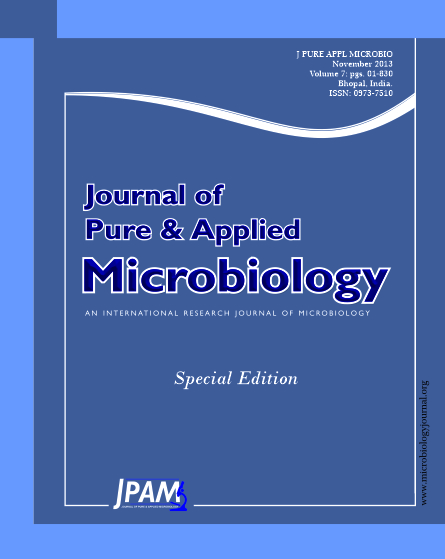Plasmids were obtained from strongly virulent Xcm strains ( HVS) and moderately virulent strains (6, 7, 10, 11 and 12) from different origin (USA, Nicaragua, Sudan, Burkina Faso, Turkey and Greece). Seventeen plasmid bands could be differentiated. The sizes ranged from 3.9 to 73.4 Mdal. The number of plasmid bands per strain varied from 1-6. On the average, each Xcm strain harboured 3 plasmid bands. Only one plasmid band (28.3 Mdal) was common to all Xcm-strains with two negative exceptions of the so-called HV strains. However, a correlation between specific plasmid profiles and strain origin was determined in several cases, independent of race designation. Our studies did not prove that the Xcm plasmids play a role in virulence or in resistance to antibiotics or heavy metal ions.
Plasmid, Virulence, Bacterial Blight of cotton, Xanthomonas sp
© The Author(s) 2013. Open Access. This article is distributed under the terms of the Creative Commons Attribution 4.0 International License which permits unrestricted use, sharing, distribution, and reproduction in any medium, provided you give appropriate credit to the original author(s) and the source, provide a link to the Creative Commons license, and indicate if changes were made.


